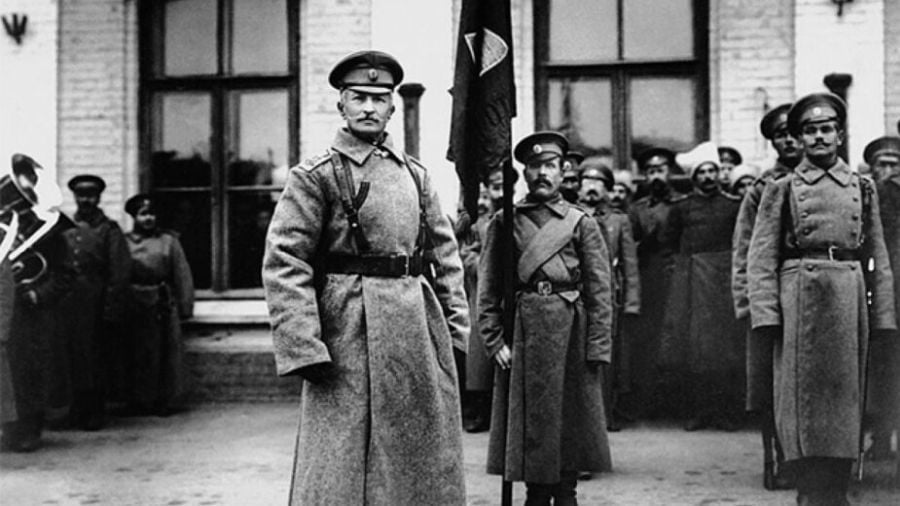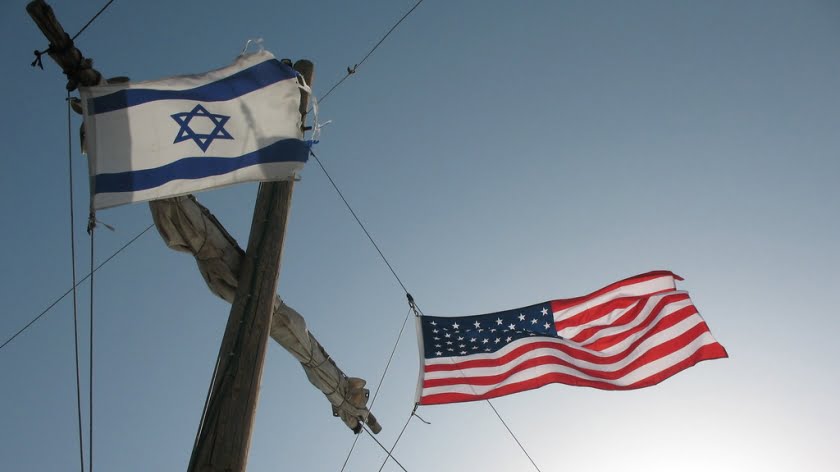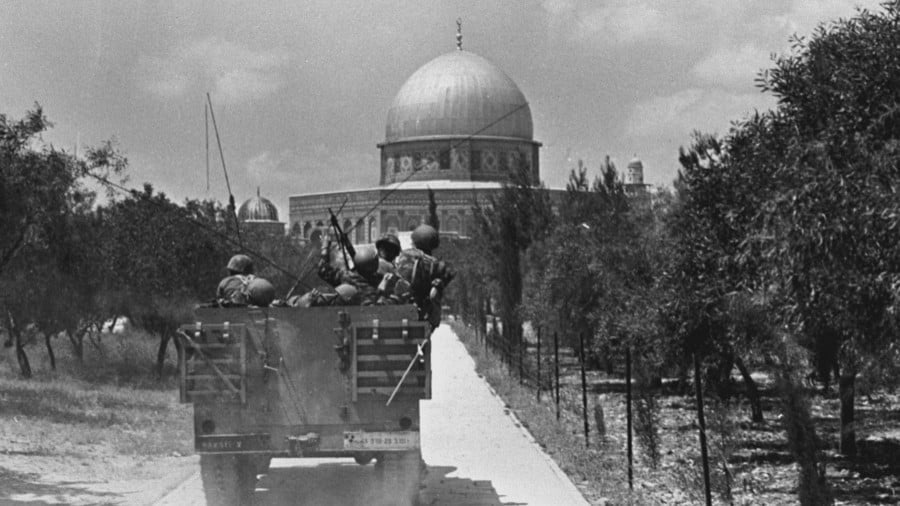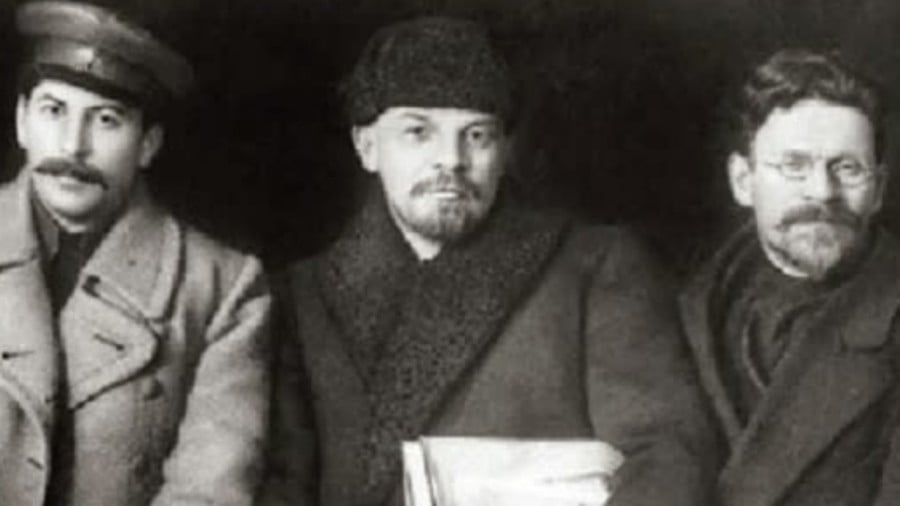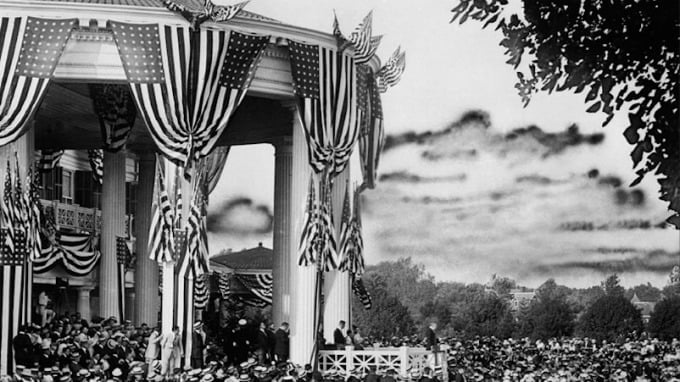The Russian Way in Warfare – The Brusilov Offensive
There are several points of difference between this attack and the British one which deserve notice and give us a perception of “a Russian way in warfare,” Patrick Armstrong writes.
An occasional series in which I attempt to illustrate, with historical examples, a “Russian style in warfare”. I have written about the “American style” here and here. In general, I believe that the Russian style is very effective while the U.S. style is not.
The “Brusilov Offensive” is the name given to a series of attacks by the Russian forces between June and September 1916 against Austro-Hungarian forces in the territory of today’s Ukraine commanded and planned by Aleksey Brusilov. Very successful initially, the attacks faded out over time. The numbers of soldiers, powers of the defence, difficulty of movement and enormous stockpiles of munitions meant that offensives, on any front, petered out because of physical exhaustion, heavy casualties and outrun supply lines. In essence, the war went on until one side simply couldn’t take any more. That point was reached by Russia in 1917 and Germany at the end of 1918. The last hammer-blow broke them, not the second-last.
But Brusilov’s offensive offers some insights into the Russian way of warfare and, in particular, stands in great contrast to the British offensive on the Somme at the same time. Brusilov used tactics which weren’t used on the Western front until the Germans in the March 1918 offensive and the Canadian Corps in “Canada’s Hundred Days.” I will start with the British Somme offensive in order to show how advanced Brusilov’s tactics were.
Like many wars, August 1914 saw confidence that victory would be achieved by Christmas. But, when Christmas came, tens of thousands had been killed and wounded and the fronts were stalemated. The Schlieffen Plan had failed, Plan XVII had failed, the “Russian steamroller” had failed: it was clear that it would be a long war; a war that would need millions of soldiers, tens of thousands of weapons, millions of tons of ammunition. No one had anticipated the casualties and the ammunition expenditure. Barbed wire, trenches, magazine rifles and – above all – machine guns, had given the defence tremendous power and for the Allies, the problem was how to overcome the defence and regain the territory that the Central Powers had secured at the beginning stages of the fighting.
The British Army undertook an enormous recruiting effort which brought in about one million men by early 1915. And that was still not enough – conscription was begun a year later. Conscription raised about two and a half million men: altogether nearly 5 million British men wore uniforms: an unimaginable number in 1914. All these had to be trained and equipped. The new armies needed stunning quantities of weapons and ammunition and factories were built and hundreds of thousands moved into them to make war materiel: a gigantic war industry was erected on the very small base of 1914. This took a great deal of time and it was only by the summer of 1916 that the commanders believed that the British Army war ready for a big offensive.
On the Western Front, the retreat from the Marne had left the Germans holding ground better suited for defence than the Allies and months of preparation and experience of failed attacks in 1915 had made their positions even stronger. The British solution to the problem was artillery – the attack would be preceded by the most powerful artillery bombardment ever carried out. One million, seven hundred thousand rounds were fired on the German positions over eight days: 150 per minute. It was expected – tests had been done – that this thunderstorm of high explosives would cut the barbed wire, collapse the trenches and annihilate the defenders. The first wave of infantry would have little to do but occupy the smashed enemy trenches and were, accordingly, heavily laden with weapons, equipment and rations. But, up to a quarter of the rounds were duds (it’s difficult to make fuses when you’re just starting), the wire wasn’t sufficiently cut, there were enough defenders to man the machine guns when the cessation of the bombardment gave them the cue to move; the British Army suffered 60,000 casualties on the first day. The battle dragged on until November with minor territorial gains and over 400,000 British casualties. The characteristics of the British attack in July 1916 were a week-long artillery bombardment and massed infantry moving forward from the existing trench line. The catastrophe resulted from the failure of the bombardment to do what it was supposed to do.
On the Eastern Front there was a similar deadlock. The Russian offensive in 1914 had failed and, as in the west, although not as densely manned, there was a long line of dug-in soldiers facing each other. The Allies had agreed that simultaneous offensives would be carried out against the Central Powers in 1916 and the Russians were the first to go. Operationally the object was to attack Austria-Hungary, correctly seen as the weaker, knock it out of the war and bring Romania into the war on the Allied side. Secondarily it was to relieve pressure on Italy and France.
The attack began a month before the Somme attack and ended a month earlier. Russian casualties were similar to the British but Austro-Hungarian losses were at least twice German losses. Territorial gains were much greater – while the Somme battle moved the front line a tiny distance, Brusilov gained much more ground. But, in the end, it was “a piece of tactical genius that had limited strategic results“. It was another second-last hammer-blow. Ironically, Romania did enter the war on the Allied side, but performed so poorly that it took Russian resources away from the main effort. The offensive’s comparative failure after the initial spectacular success probably contributed to Russia’s dropping out of the war the next year rather as a similar disappointment did for Germany in 1918.
But, operationally and tactically it was a stunning success. There are several points of difference between this attack and the British one which deserve notice and give us a perception of “a Russian way in warfare”. The use of deception to create surprise; maximising the effect of artillery fire; the use of forward saps to reduce infantry exposure to fire; the use of specialised advance troops for reconnaissance and fire correction.
(The following quotations come from Dowling’s The Brusilov Offensive.) We will begin, because it sums it up well, this account by an Austrian soldier on the receiving end.
In the dugouts of the first trench of the 82nd [Austrian] I[nfantry] R[egiment], because one still had the echo of the drumming fire in his ear, it was already five seconds after the artillery was no longer directed at the first trench. In the sixth second perhaps a spirited defender cried: to the trenches! In the seventh second he ran into someone in the stairwell, and under a low-hanging balcony that was splintered and torn to pieces a hand grenade skidded after him. And in the eighth second a voice from above called down to the men in the cellar that they should give themselves up.
Quite different from the experience of a German soldier on the Somme who, if he had not been buried or driven mad by the week of shelling, had enough time to get up to the fire step and aim his machine-gun at the heavily-laden infantry struggling through the wire towards him.
While the British had fired a continuous bombardment, Brusilov had a series of short but intense bombardments:
The Russian guns opened up at 4:00 AM along the entire front as ordered, but the display was far from impressive. After three hours of steady, concentrated, but not overwhelming shelling, the Russian guns fell quiet again. The Habsburg forces rushed to man their forward lines, anticipating the attacks their intelligence had been predicting. The Russians, however, remained in their trenches while observers checked the damage done to the Austro-Hungarian positions. Only a few weak reconnaissance patrols emerged to challenge the Habsburg forces; after an hour or so, the shelling resumed-slow, steady, and deadly accurate.
Consequently, the Austrians never knew when the bombardment had really stopped and the infantry assault would begin. On the Somme the Germans correctly assumed that the end of the shelling meant the beginning of the attack but, as our soldier relates, the Austrians only knew it when the Russians were already in their trenches: “Confused by the pauses between barrages, the troops were increasingly hesitant to man the front lines”. Second, Brusilov had his soldiers dig trenches – saps – forward so that they would only have 50 to 100 metres to run: “Brusilov wanted the point of departure for the Russian infantry assaults to be no greater than 100 meters, and he preferred that the distance be 60 meters or less”; the British had the whole distance to cover. Third, light reconnaissance teams went into no man’s land to check the accuracy of each phase of the bombardment and direct the next.
Artillery is most effective in the first few seconds – merely lying down significantly increases the probability of survival. Brusilov also understood that the cessation of fire will be taken by the enemy as a signal that the attack is about to begin. This will be seen again in Soviet artillery use in the Second World War and is the reason for the Soviet/Russian development of MLRS which produce tremendous explosive fire in very quick times (the BM-21 Grad can fire 40 rockets in 20 seconds. To say nothing of this.)
And, fourth, Brusilov used every means of deception available to him to make the enemy think the attacks were coming somewhere else:
overwhelming the Austro-Hungarian forces with information and options… Brusilov mounted a counterintelligence campaign, sending false instructions over the radio and by messenger while specific instructions concerning the offensive were relayed verbally… false artillery batteries…
There does not seem to have been any deception attempts used on the Somme – and, indeed, the enormous piles of artillery shells were in the open for all to see.
In conclusion, the Brusilov Offensive shows
- deception creating operational and tactical surprise;
- maximising artillery effects;
- reducing troop exposure;
- specialised reconnaissance troops.
Further essays will examine these and other factors in Russian war-fighting.

